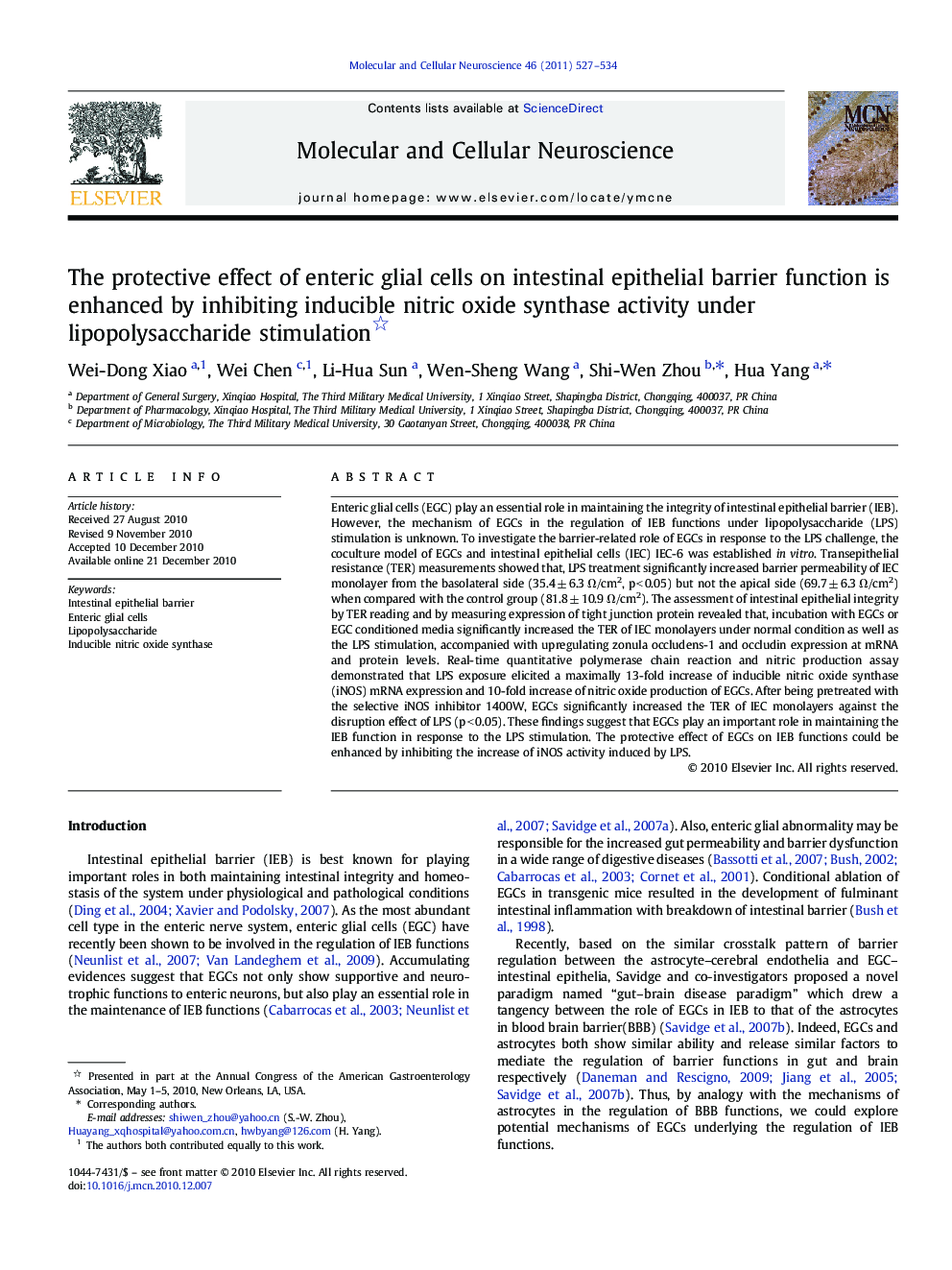| Article ID | Journal | Published Year | Pages | File Type |
|---|---|---|---|---|
| 10956572 | Molecular and Cellular Neuroscience | 2011 | 8 Pages |
Abstract
Enteric glial cells (EGC) play an essential role in maintaining the integrity of intestinal epithelial barrier (IEB). However, the mechanism of EGCs in the regulation of IEB functions under lipopolysaccharide (LPS) stimulation is unknown. To investigate the barrier-related role of EGCs in response to the LPS challenge, the coculture model of EGCs and intestinal epithelial cells (IEC) IEC-6 was established in vitro. Transepithelial resistance (TER) measurements showed that, LPS treatment significantly increased barrier permeability of IEC monolayer from the basolateral side (35.4 ± 6.3 Ω/cm2, p < 0.05) but not the apical side (69.7 ± 6.3 Ω/cm2) when compared with the control group (81.8 ± 10.9 Ω/cm2). The assessment of intestinal epithelial integrity by TER reading and by measuring expression of tight junction protein revealed that, incubation with EGCs or EGC conditioned media significantly increased the TER of IEC monolayers under normal condition as well as the LPS stimulation, accompanied with upregulating zonula occludens-1 and occludin expression at mRNA and protein levels. Real-time quantitative polymerase chain reaction and nitric production assay demonstrated that LPS exposure elicited a maximally 13-fold increase of inducible nitric oxide synthase (iNOS) mRNA expression and 10-fold increase of nitric oxide production of EGCs. After being pretreated with the selective iNOS inhibitor 1400W, EGCs significantly increased the TER of IEC monolayers against the disruption effect of LPS (p < 0.05). These findings suggest that EGCs play an important role in maintaining the IEB function in response to the LPS stimulation. The protective effect of EGCs on IEB functions could be enhanced by inhibiting the increase of iNOS activity induced by LPS.
Keywords
Related Topics
Life Sciences
Biochemistry, Genetics and Molecular Biology
Cell Biology
Authors
Wei-Dong Xiao, Wei Chen, Li-Hua Sun, Wen-Sheng Wang, Shi-Wen Zhou, Hua Yang,
